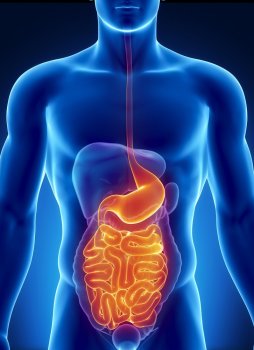3 April 2014
Scientists have identified the biochemical signal that wakes up a group of immune cells and sends them into action against invading bacteria and fungi.
An international research team led by Australia, and involving the universities of Melbourne, Monash, Queensland and Cork, announced their discovery in the journal Nature on 3 April 2014.
The team’s findings will help researchers develop new ways of diagnosing and treating chronic inflammatory diseases such as tuberculosis, peptic ulcers, periodontal disease and inflammatory bowel disease. The work could also assist the development of novel protective vaccines.
 The work focuses on a group of immune cells called ‘mucosal-associated invariant T cells (MAITs) found in our guts, lungs and mouths. MAITs make up about one in ten of the body’s T cells and half of all T cells in the liver.
The work focuses on a group of immune cells called ‘mucosal-associated invariant T cells (MAITs) found in our guts, lungs and mouths. MAITs make up about one in ten of the body’s T cells and half of all T cells in the liver.
In 2013, members of the research team won an Australian Museum Eureka Prize for finding that MAITs detect and respond to vitamin B by-products associated with the biosynthesis of vitamin B2 (riboflavin) in many invasive bacteria and fungi.
The latest discovery narrows the biochemical trigger down to a small group of compounds produced by specific bacteria and fungi, which may be associated with several diseases. The finding that MAITs detect the by-products of bacterial riboflavin synthesis but don’t detect actual riboflavin in the diet could provide valuable clues for new drug development strategies.
The researchers used synchrotron x-ray diffraction techniques at the Australian Synchrotron’s MX beamlines to determine key structural details of MAIT interactions with short-lived by-products of bacterial riboflavin synthesis.
Alexandra J. Corbett et al., T-cell activation by transitory neo-antigens derived from distinct microbial pathways, Nature, published online 2 April 2014, doi:10.1038/nature13160
Media release from ARC Centre of Excellence in Advanced Molecular Imaging
